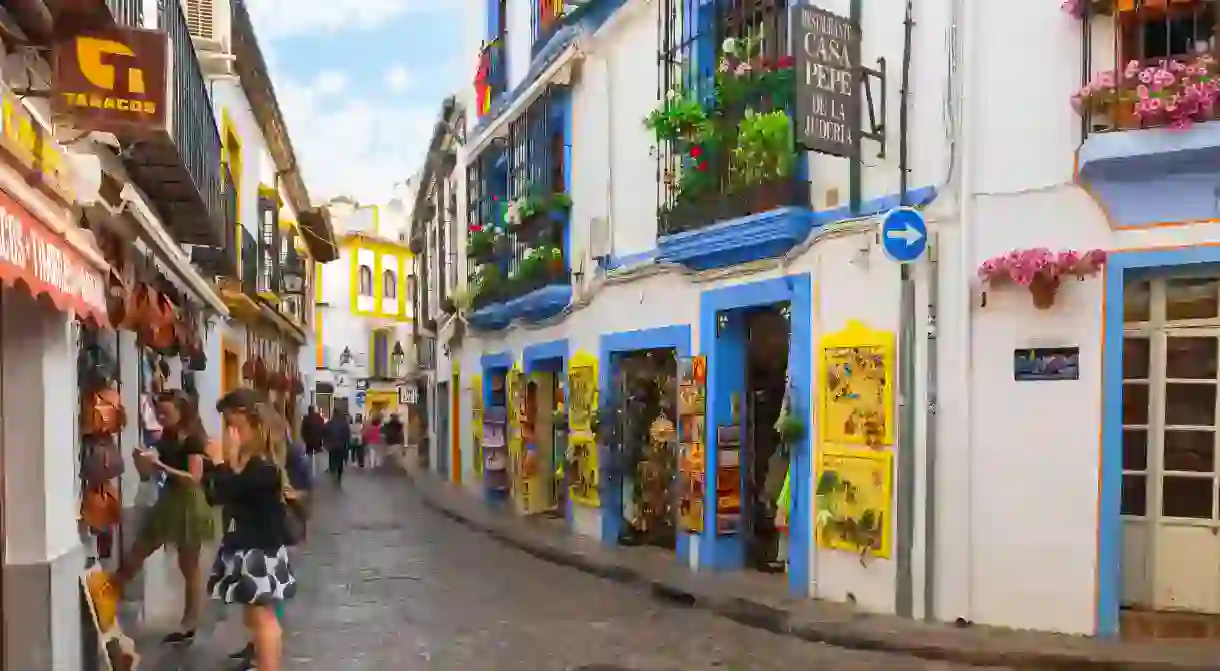A Guide to the Old Town in Córdoba, Spain

The neighbourhoods of central Córdoba make up one of the most enchanting old towns in all of Andalusia: a centuries-old district of flower-filled streets and whitewashed houses, rivalled only by Granada’s Albaicín or Seville’s Santa Cruz. Culture Trip takes you around the city’s oldest barrios, providing insiders’ tips for sightseeing and recommending the best places to eat and drink along the way.
San Basilio
Architectural Landmark

The San Basilio neighbourhood, in the southwestern corner of Córdoba’s old town, sits between the River Guadalquivir and the beautiful Victoria Gardens. Most of the old houses here participate in May’s Fiesta de los Patios, when residents open up their colourful courtyards to the public for two weeks. San Basilio’s architectural landmark is the 14th-century Alcázar de los Reyes Cristianos, a palace for Spain’s Catholic kings built on the site of a Moorish fortress, surrounded by gardens of tropical splendour. Like all of Córdoba’s old town, San Basilio is a small neighbourhood and easy to walk around, but avoid doing so during the hottest part of the day. Morning and early evening are the best times for a wander.
Santa Marina
Church
San Andrés-San Pablo
Ruins

Immediately south of Santa Marina is the trendy barrio of San Andrés-San Pablo, where the tapas and cocktail bars are crowded with twentysomethings on weekends. On the northern border with Santa Marina is the 15th-century Palacio de Viana, a sprawling residence for local aristocracy, surrounded by 12 courtyards in classic Córdoban style. Entry to the palace and courtyards costs €10 (£9). San Andrés-San Pablo is also where you’ll find the ruins of Córdoba’s first-century Roman temple, unearthed in the 1950s during work on the town hall.
Judería de Córdoba
Architectural Landmark
Córdoba’s former Jewish quarter, extending north and east of the Mosque-Cathedral, contains many of the city’s most famous streets and squares. The most photographed of them all is the Calleja de las Flores, a romantic alleyway decked out with the brightly coloured flowers and blue flowerpots that are so emblematic of this region of Spain. Indeed, they’re such a significant part of the Cordoban and Andalusian culture that the city’s annual Fiesta de los Patios was declared Unesco-protected heritage in 2012. Judería is also where you’ll find two of Córdoba’s most important architectural attractions: the great Mosque-Cathedral (Mezquita-Catedral) – an incomparable combination of a medieval mosque and Renaissance cathedral, the latter built right on top of the former by Charles V in the 16th century – and the understated 14th-century synagogue.
Tapas bars
Restaurant, Spanish

Córdoba’s old town is packed with tapas bars where you can stop for a caña (small beer) or vino (wine) and a bite to eat as you explore. Standouts include Bodegas Mezquita, a modern eatery overlooking the river; rooftop restaurant Casa Pepe in Judería; and Bar Santos, a kiosk-size joint opposite the mosque that serves the best tortillas (Spanish omelette) in town. For a more nightlife vibe or some interesting fusion joints, head to Calle San Fernando, where you’ll find “bistronómic tapas bar” Garum 2.1.













